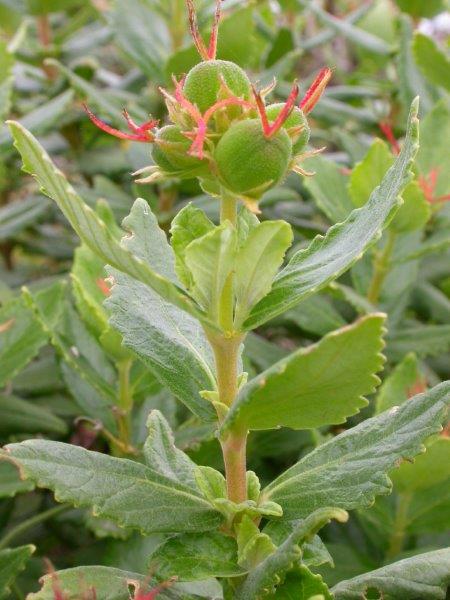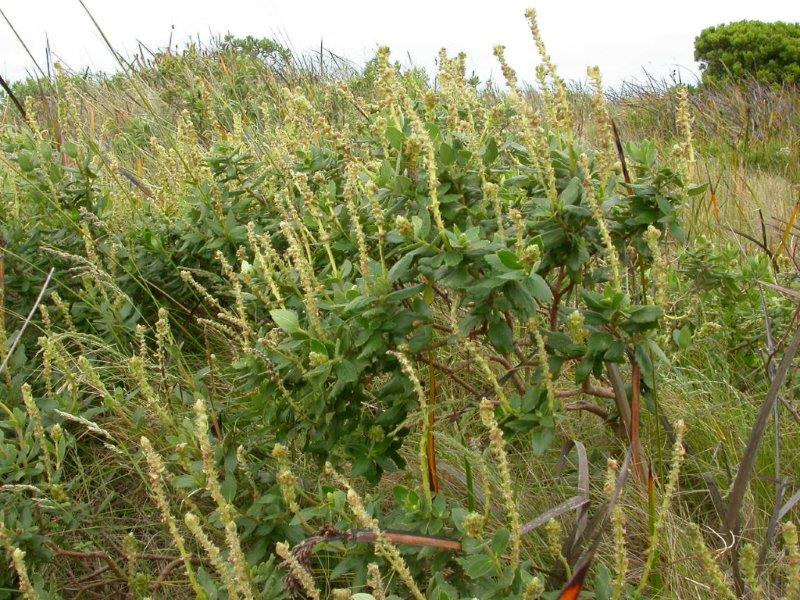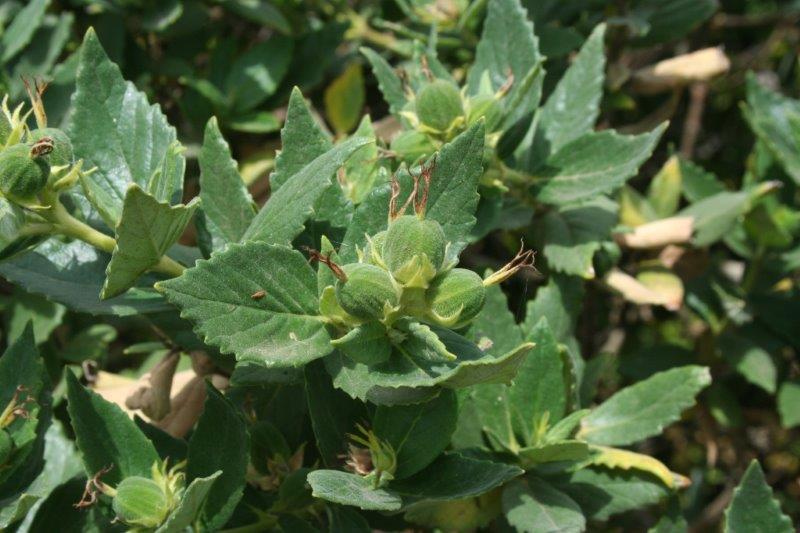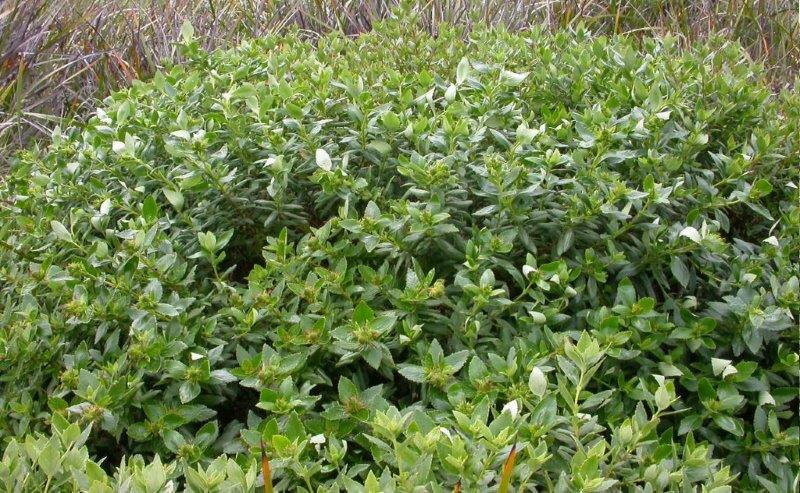



Coast Bitter-bush is an erect, fast-growing, spreading shrub to 2m high with male and female flowers on separate plants. Within the Surf Coast it is found as a single population at Point Impossible where it grows in sheltered swales in beach sandunes as part of the Ecological Vegetation Class 'Calcarenite Dune Woodland', a sub-community of Coastal Alkaline Scrub (EVC 858). There are two forms possible.The first produces foliage that is glabrous, shiny green above, paler below; the second has an upper leaf surface dull bluish-green and faintly woolly (pubescent); paler below. The former is considered a threatened taxon in Victoria. It is almost exclusively the latter form that occurs at Point Impossible. Seed remains viable in the ground for long periods and can reappear after disturbance producing either form.
There are two Adriana species; both are endemic to Australia.
Leaves ovate to lanceolate; sessile and usually opposite; margins toothed.
Flowers appear from July to February. Male flowers form on flower spikes up to 17cm long. Female flowers grow in congested clusters with three distinct 2-branched red styles.
Fruit is a globose capsule separating into 3 fruitlets; each of which produce one seed that eject explosively when mature in summer heat.
The larvae of a butterfly, known as the Bitter-bush Blue (Theclinesthes albocincta) feeds exclusively on Bitter-bush.
Can be short-lived.
The two sides of the leaf are different colours